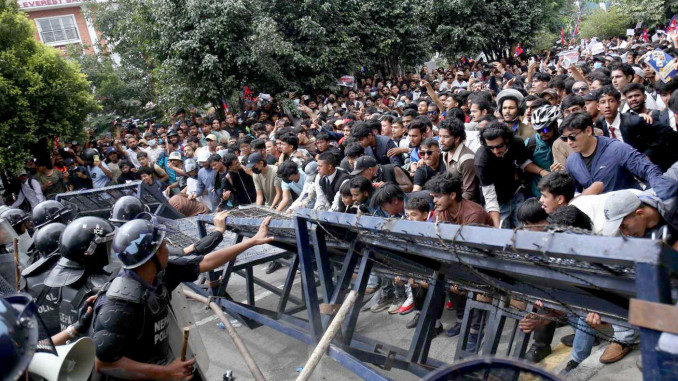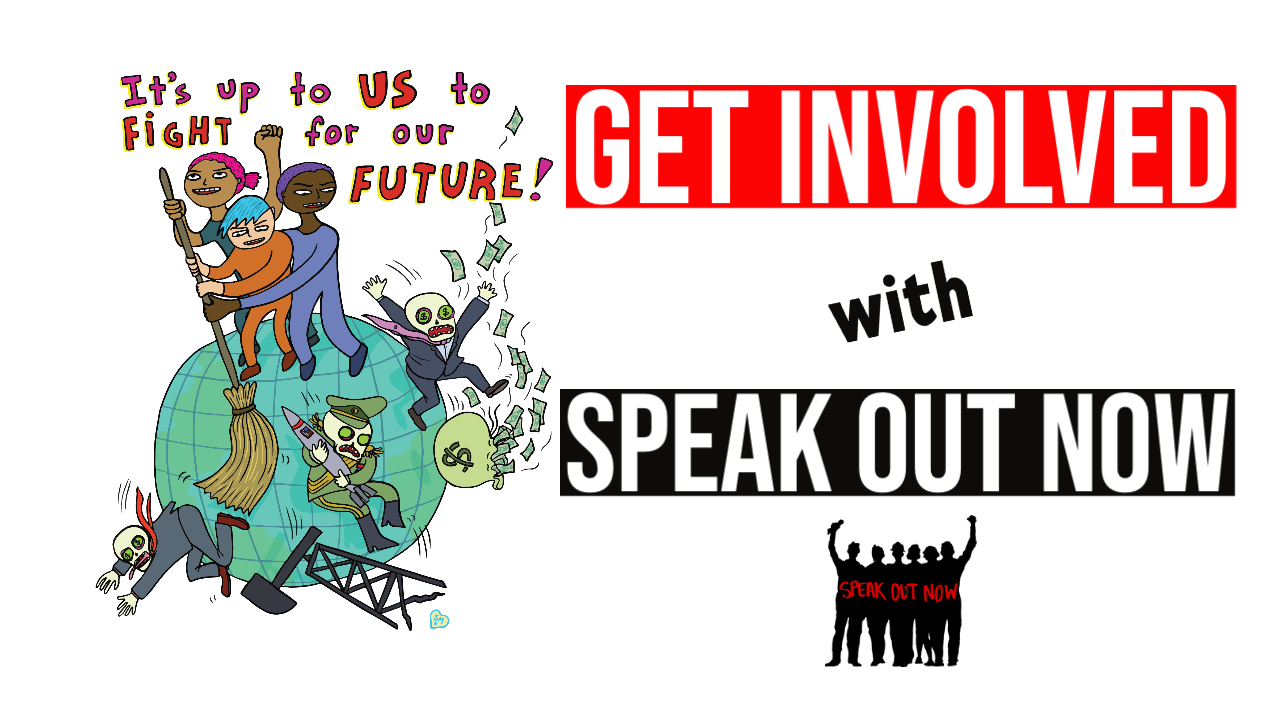
On September 8 and 9, a fast-moving protest movement called by a local non-governmental organization (NGO) rapidly became a social movement that brought down the Nepalese government.
These events were sparked on September 4, when the government banned 26 social media companies, including WhatsApp, Facebook, Instagram and Youtube. After two days of escalating protests, massive damage to government infrastructure and property had taken place, at least 30 people were dead and hundreds were wounded, and most leading figures in the government had fled or stepped down from their positions. What was left was a temporary government headed by military leaders and a debate being conducted over social media apps like Discord about how to move forward.
While the ban on the social media apps was the spark that set off the explosion, as with most major social events, the protests were caused by a much broader anger felt by a large layer of Nepal’s population of 30 million.
Nepal is one of the poorer nations on earth and in recent years economic conditions for many have deteriorated. The official unemployment rate of 12% masks a much higher real unemployment rate. Remittances from more than two million Nepalese living abroad make up a huge proportion of income for millions who remain, and hundreds of thousands work seasonally in India. Youth unemployment is higher than the rate for the nation as a whole, child poverty is at least 35%, and an estimated 1,000 young people per day leave the nation for better jobs in the Gulf States and other countries in South Asia.
The nation was ruled by a constitutional monarchy until a political revolution between 2006 and 2008 toppled the longtime rulers and formed a constitutional republic. But there were no economic changes. The majority of the land remained in the hands of the largest landowners and the businesses and means of production remained in the hands of the capitalists and their allies in government. Since then, the nation has had 14 separate governments featuring three main parties, two of which claim to be Marxist, but in reality are both reformist parties that have supported the capitalist order in coalition with other liberal capitalist parties. They have even allied at least once in a coalition with a reactionary Hindu-nationalist party. Corruption is rampant, and numerous examples of bribery and kickbacks have been publicly documented and are well known by most Nepalese.
These corrupt political elites live lavish lifestyles which are also openly documented, much of it on social media. The social media accounts are full of photos of them and their children showing off expensive cars, properties, and luxury clothes, earning the children the label “nepo kids” and stoking a deep resentment towards their wealth and privilege.
Nepal has also been a victim of imperialism, although in this case the outside power has been mostly India, its massive neighbor to the south. Chinese investments have also been increasing, and in recent years Nepal has seen more influence from the Chinese government and Chinese capitalist interests. This means that along with a layer of Nepalese landowners and business interests exploiting the Nepalese people, outside economic interests also influence and sometimes subordinate the Nepalese capitalists. These dual layers of exploitation ensure that the economy of Nepal doesn’t work at all in the interests of the people themselves.
The conflict between the Nepalese government and multinational tech companies then layered onto these pre-existing social conditions. The government wanted more than two dozen tech companies to register and consent to at least some oversight by the government. When most refused, the government took action to ban some of their activities in Nepal. This ban suddenly made it impossible for millions of Nepalese to communicate with relatives both in and outside of the country. Not only was communication cut with relatives and friends; since many use the apps for business activities, it was an also economic blow for many. The sudden and direct effects of this ban triggered the protests. The government quickly lifted the ban in an attempt to placate the protesters, but it was too late.
Much like last year’s uprising that brought down the government in Bangladesh, this uprising was the product of years of pent-up anger and resentment at the political and economic forces that dominate Nepalese society. What comes next is unclear. A new prime minister has accepted the role, and a Discord chat group with more than 100,000 people is the site of an ongoing debate over how to organize a new government and who will lead it. But the corrupt parties that have overseen the corruption and exploitation continue to exist and work behind the scenes to influence events. There is no guarantee that this uprising will make concrete changes of any sort, much less the fundamental changes to the economic system that millions are so desperate for.
But the events in Nepal once again show us the power of the masses of people. Hundreds of thousands, particularly the youth and working people, took to the streets and forced their views onto the political stage. Many will criticize social movements and youth movements in Bangladesh and Nepal as being incapable of leading a government or incapable of bringing change. But they are learning by doing, which can be the starting point for more fundamental change.
To accomplish their goals, or to develop the awareness of the need for new goals, they and other social movements will need to develop better organization for the movement and a better awareness of the root causes of many of their problems. As was clear after the 2006-2008 political revolution, if the economic system and class structure are allowed to remain the same, little will change. And without a coherent and dedicated organization based in the working class to keep them out, the same corrupt parties that have ruled for the past 17 years will slip back into power and continue to do so.
While Nepal is not the largest or most influential nation in the region, it nonetheless gives us another example of working people, students, and other youth fighting to topple the parasites and oppressors who dominate us. As economic conditions in many parts of the world continue to deteriorate, we will continue to see more uprisings of this sort challenging not only political elites but also the capitalists who shape the political systems for their needs. We can’t know which places will see upsurges next, but we know uprisings will continue to occur. Last year it was Sri Lanka and Bangladesh in South Asia, today it is Nepal, and tomorrow it could be China, or Nigeria, or France or the U.S.
Our task is to organize ourselves and those around us in ways that prepare us for when these risings occur. Only then will we have a chance to truly get rid of those who exploit us and our planet for their profit. And only then will we be able to build a new world the serves our needs.



